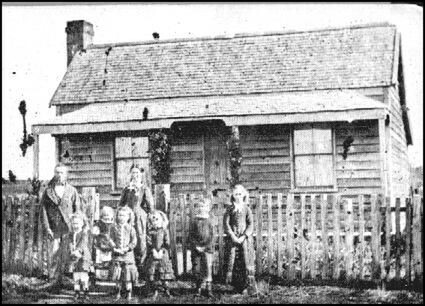If you’ve experienced New Zealand winter, you’ll no doubt have wondered why it is that in a country with frosty winters (and lovely skiing), so many New Zealanders live in cold houses? And further, why do we take cold homes for granted – should we just ‘suck it up’ or ‘tough it out’ when warmer, healthier and better homes are well within our reach?
Read on as we explore New Zealand’s cold home problem, and the solutions.
Why are Kiwi homes so cold?
New Zealand was colonised largely during the 19th century. Homes were made of lightweight timber to reflect the prevailing British style using readily available construction materials. There was limited understanding of, or adaptation to the wildly different climate conditions of New Zealand, which meant colonists overlooked the more suitable thermal qualities of the stone and brick homes they had left behind.
Stoicism — and discomfort — were part of colonial life, and it was customary to heat a kitchen with a coal range and a living room with a fire, with all other rooms left cold.
Frontier culture was embedded with a masculinity that meant to admit to experiencing pain or discomfort due to cold would be to admit weakness and potentially weaken your social standing. As we are now still only a few generations removed from these original pioneers, this mindset remains prevalent throughout New Zealand.
We need to talk about fuel poverty: NZ’s silent crisis
Being a more recent immigrant myself, I immediately noticed the contrast between UK and New Zealand homes. For example, in the UK, homes with central heating are typical, while in New Zealand, only around 5% of homes are centrally heated.
But one thing both cultures share is concerning levels of fuel poverty, which is defined as the need to spend over 10% of your income on fuel.
In the UK, an estimated 12% of households experienced fuel poverty in 2024. That means nearly one in 10 households are living in temperatures below the World Health Organisation recommended 18°C.
But in New Zealand, things are often far worse. For instance, in 2008 a whopping 47% of Dunedin households were living in fuel poverty.
The solutions to New Zealand’s cold house problem
First, we must acknowledge the severity of the issue of cold homes and accept that the status quo is not good enough. Acknowledgement is the first step to bringing about real change to our living standards. And as a nation, we should be pushing for solutions, including the following.
1. Continue improving the Building Code
For healthy homes to become the norm, the NZ Building Code section H1 requirements were increased last year (2023). This upgrade was long overdue and followed the Building for Climate Change programme, initiated in 2021. The upgrade is making a big difference to new homes and has already influenced a sea-change in improved options available to homeowners. However, it is essential that this code continues to be increased, as the recommended improvements were pared back due to opposition from major players in the industry.
There are also important areas of the building code that remain un-addressed, including appropriate ventilation and the overheating issue which affects many new townhouses in NZ’s cities. It is essential that the Building Code continues to be improved to ensure healthy homes for all New Zealanders.
2. Upgrade existing housing
By 2050, it is estimated that two thirds of homes will be existing stock. Most of these homes will be well below the current code requirements, which means the majority of New Zealanders will be living in cold, damp, unhealthy homes. This will continue to have negative effects on our energy usage as a country. Requirements to improve existing houses must be implemented if Kiwi living standards are to meaningfully improve.
3. Build better than the Code
If you are building or renovating, don’t build to the Code Minimum. Remember that when you build, you are creating a legacy for future generations. Do the best you can by increasing levels of insulation, installing the best windows your budget permits, and if it’s feasible – making your home airtight with heat recovery ventilation. Learn more about Passive House design and begin adopting these design philosophies. To make your home warmer, optimise its orientation and opt for a simpler build – this will not only cost you less to construct but also ensure a more efficient home at no extra cost. You should also get your home energy modelled – this is an inexpensive way to optimise your investment and ensure the most bang for your buck.
4. Small is beautiful
A simple but highly cost-effective strategy is to build a smaller but higher quality home. Since 1990, the average size of new homes in NZ has increased by over 50%, while build costs excluding land have increased by up to 90% since 2008. That means we are building way bigger and at a much higher cost. How can we expect to maintain let alone improve quality if this trend continues?
Smaller homes are easier to keep warm, and with such high building costs, the money you save by building smaller could be invested in your home’s long-term value with more insulation, airtightness, or a better heating and ventilation system. We also recommend learning more about Passive House and adopting these design philosophies. Doing this will pay dividends both now and in the long run.
Conclusion
We can do better, and we can do something now. There is a housing shortage which means this is the time to influence the design of many new homes and make a significant impact to the situation nationwide. We need to build better. And we can achieve it – if we can just change our thinking.
Enquire now to have your existing or new home energy modelled and see how your building will perform.

